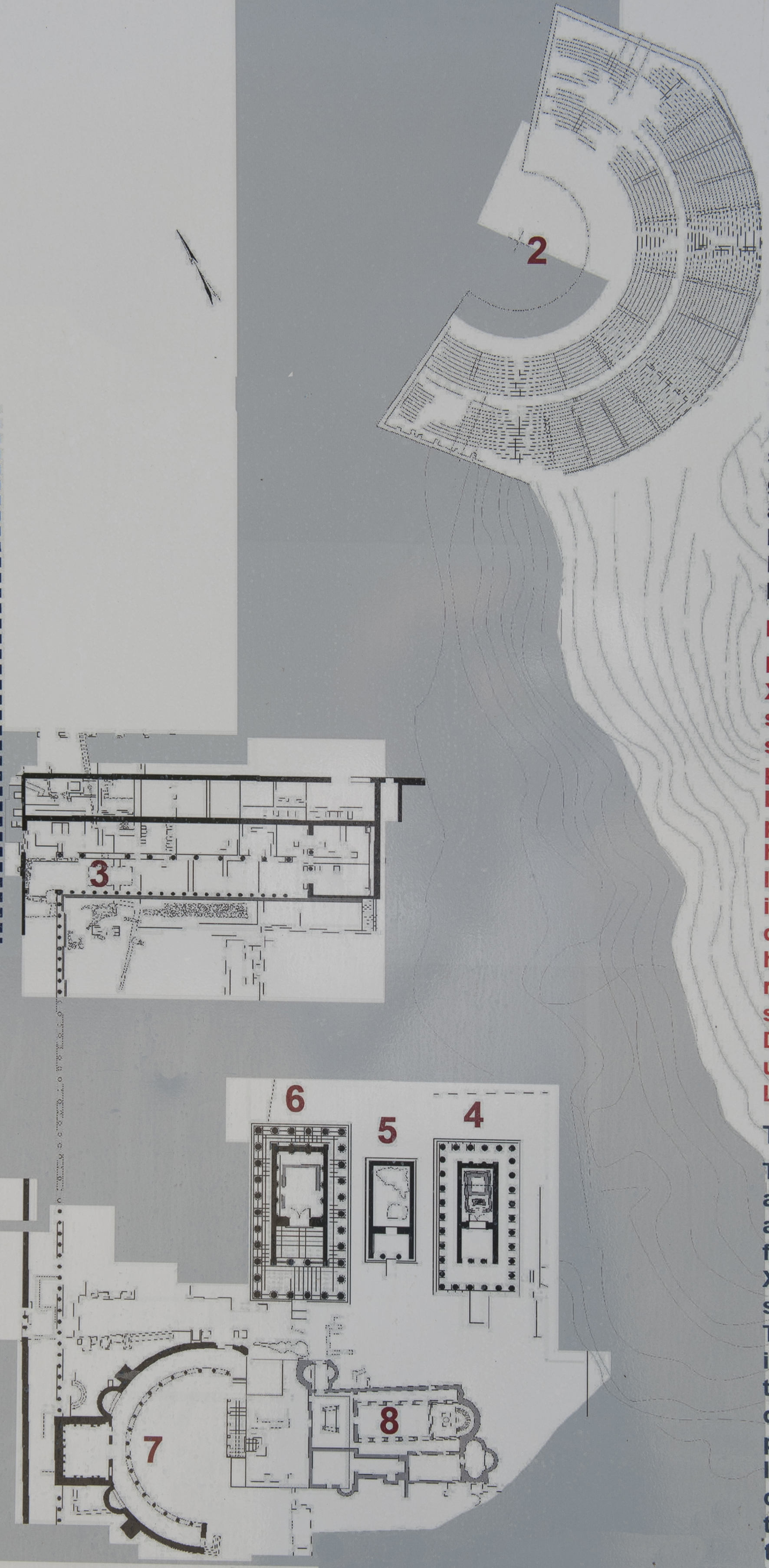Letoon Info 5289 on:
[Wikipedia]
[Google]
[Amazon]


 The Letoon ( grc, Λητῷον), sometimes Latinized as Letoum, was a sanctuary of Leto located 4km south of the ancient city of Xanthos to which it was closely associated, and along the Xanthos River. It was one of the most important religious centres in the region though never a fully-occupied settlement.
The site is located south of the village Kumluova in the Fethiye district of Muğla Province, Turkey.
It was added as a UNESCO World Heritage Site along with Xanthos in 1988.
The Letoon ( grc, Λητῷον), sometimes Latinized as Letoum, was a sanctuary of Leto located 4km south of the ancient city of Xanthos to which it was closely associated, and along the Xanthos River. It was one of the most important religious centres in the region though never a fully-occupied settlement.
The site is located south of the village Kumluova in the Fethiye district of Muğla Province, Turkey.
It was added as a UNESCO World Heritage Site along with Xanthos in 1988.
The official website of the French Archaeological Mission of Xanthos-Letoon
UNESCO World Heritage Centre: Xanthos-Letoon
website of the research project on Xanthos and Letoon by Université du Québec à Montréal and Université Laval, including downloadable published works
Extensive picture collection of Letoon
Letoon Photo Guide
{{Authority control Lycia World Heritage Sites in Turkey Ancient Greek archaeological sites in Turkey Archaeological sites in the Aegean Region Leto


 The Letoon ( grc, Λητῷον), sometimes Latinized as Letoum, was a sanctuary of Leto located 4km south of the ancient city of Xanthos to which it was closely associated, and along the Xanthos River. It was one of the most important religious centres in the region though never a fully-occupied settlement.
The site is located south of the village Kumluova in the Fethiye district of Muğla Province, Turkey.
It was added as a UNESCO World Heritage Site along with Xanthos in 1988.
The Letoon ( grc, Λητῷον), sometimes Latinized as Letoum, was a sanctuary of Leto located 4km south of the ancient city of Xanthos to which it was closely associated, and along the Xanthos River. It was one of the most important religious centres in the region though never a fully-occupied settlement.
The site is located south of the village Kumluova in the Fethiye district of Muğla Province, Turkey.
It was added as a UNESCO World Heritage Site along with Xanthos in 1988.
History
Archaeological finds at the site date to the late sixth century BC. This was before the Greekcultural hegemony
In Marxist philosophy, cultural hegemony is the dominance of a culturally diverse society by the ruling class who manipulate the culture of that society—the beliefs and explanations, perceptions, values, and mores—so that the worldview of t ...
in Lycia, which began in the early fourth century. In earlier times, the site was probably already sacred to the cult of an earlier mother goddess — she is ''Eni Mahanahi'' in Lycia — which was superseded by the worship of Leto, joined by her twin offspring.
In Greek mythology, a claim for an early cult of Apollo in the valley of the Xanthus, unsupported by history or archaeology, was provided by two myths, each connected to an eponymous " Lycus". One sprang from the autochthonous Telchines of Rhodes and would have colonized the region at the time of Deucalion's flood; the other Lycus was an Athenian brother of Aegeus driven from Athens, a seer who introduced the cult of Lycaean Apollo, which a folk etymology connected with Lycia and therefore made him its Athenian colonizer: see Lycus (mythology).
The foundations of the Hellenistic
In Classical antiquity, the Hellenistic period covers the time in Mediterranean history after Classical Greece, between the death of Alexander the Great in 323 BC and the emergence of the Roman Empire, as signified by the Battle of Actium in ...
temple dedicated to Leto, and her children, Artemis and Apollo, have been excavated under the direction of Henri Metzger
Henri Metzger (; 19 August 1912 – 2 October 2007) was a French archaeologist and Hellenist, a member of the Institut de France. He specialized in pottery of ancient Greece, particularly from Athens, and archaeology in Anatolia, specifically in ...
from 1962. Archæologists have excavated much of the ruins; discoveries include the Letoon trilingual, bearing inscriptions in Greek, Lycian and Aramaic, which has provided crucial keys in the deciphering of the Lycian language; it is conserved in the Fethiye Museum.
The sacrosanctity of the site is the purport of an anecdote related by Appian concerning Mithridates
Mithridates or Mithradates ( Old Persian 𐎷𐎡𐎰𐎼𐎭𐎠𐎫 ''Miθradāta'') is the Hellenistic form of an Iranian theophoric name, meaning "given by the Mithra". Its Modern Persian form is Mehrdad. It may refer to:
Rulers
*Of Cius (al ...
, who was planning to cut down the trees in the sacred grove for his own purposes in his siege of the Lycian coastal city of Patara, but was warned against the sacrilegious action in a nightmare.Appian, ''Mithridates'', 27, noted by T. R. Bryce, "The Arrival of the Goddess Leto in Lycia", ''Historia: Zeitschrift für Alte Geschichte'', 321 (1983:1-13). p. 3 and note 9. The site remained active through the Roman period. The site was Christianised by the construction of an early church, which reused cut stone from the sanctuary, but was abandoned from the seventh century.
Notes
External links
The official website of the French Archaeological Mission of Xanthos-Letoon
UNESCO World Heritage Centre: Xanthos-Letoon
website of the research project on Xanthos and Letoon by Université du Québec à Montréal and Université Laval, including downloadable published works
Extensive picture collection of Letoon
Letoon Photo Guide
{{Authority control Lycia World Heritage Sites in Turkey Ancient Greek archaeological sites in Turkey Archaeological sites in the Aegean Region Leto